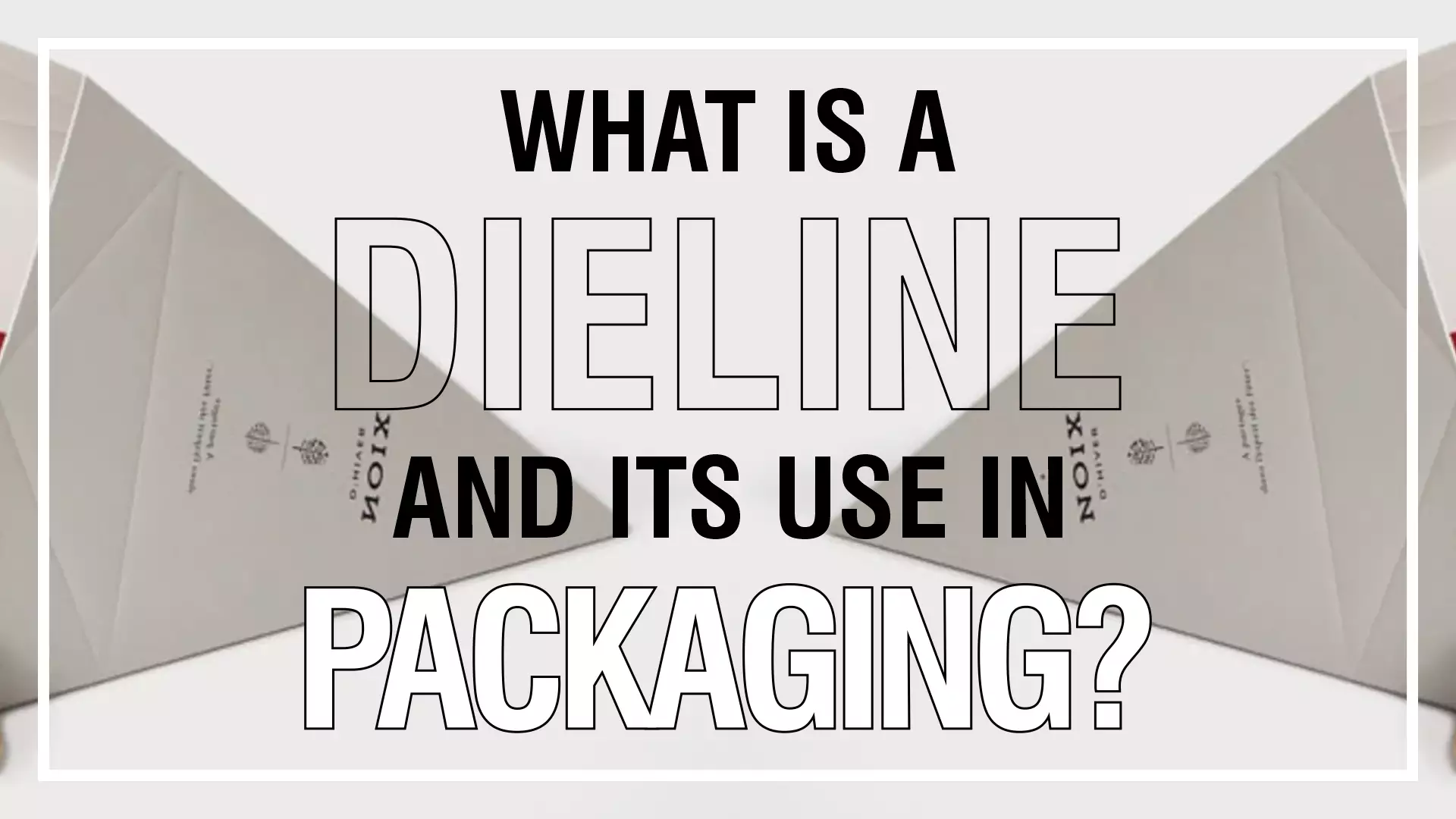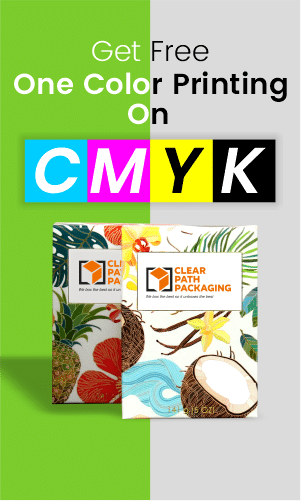The term Dieline is considered as a template that provides complete authority toward correct layout in the printing and packaging industry. This template represents a diagram that marks all the cut lines and folds of the boxes in a flattened form.
Usually, box packaging designers create the Dielines through printers and cutters. However, the concept of Dielines is used in different sorts of packaging, not only in creating the boxes. Dieline is helpful in creating the final product with the possibilities of high-end packaging, whether complex or simple one. It is useful for products in many sorts of boxes for instance, envelopes, pocket folders and many more. However the three types of lines are:
- The cuts line
- Perforation lines
- Fold lines
The dielines show the printer where to make the cuts and perforations so that the packaging, so it’s easy to fold after printing. Since perforation lines and cutting or trim lines convey distinct information, they are typically shown as separate layers of colored dots.
After printing, the printer uses two separate phases to cut and perforate the paper.
The Importance of Dielines
Dielines are crucial in die-cutting because they serve as the primary template for the artwork. You might think of it as a blueprint that guarantees the following aspects of the printed product:
- Dimensions, sizes, and scales of packages.
- Where exactly logos, text, and photos are placed on the page?
- Connection points include wrinkles, glue tabs, eye markings, and folds.
- Specific instructions for manufacture, including any necessary bleeds.
By sketching out these components, designers may better understand how the finished product will look. The workout is as easy as grabbing a box of cereal or crackers from the pantry. Remove the box’s tabs and lay it flat. All the creases, folds, and other visual aspects on the box’s sides, front, and back will be neatly aligned for your inspection. You could probably use a pencil to trace them, as they are dielines.
However, dielines aren’t limited to boxes and other geometric shapes. You can also commonly make a broad variety of items, including beverage packaging, brochures, food packaging, and pretty much anything else that needs special packaging.
How Can You Create a Dieline?
Making your first set of dielines from scratch might seem daunting, but like any other skill, it improves with practice. Finding a box with similar dimensions will be a good starting point for your design. Once more, remove the tabs, lay it flat, and take measurements. Using these dimensions, you may make your own dielines.
Some customers even go in depth to check the finishing result into the printer. The graphics and tucks can easily locate with this approach. Wrapping paper is another useful tool for determining an approximate product size.
Selecting a suitable design tool is the next step. Typical applications for making dielines include Adobe Illustrator, Adobe Design, and Artioscad. However, no single instrument is superior to any other; choose whatever you’re most at ease with. The client usually has a preferred method or instrument.
Making Cutline in Adobe Illustrator

Regardless of the application that you choose to produce the artwork, setting up your dielines effectively in Adobe Illustrator requires a few more steps.
- To make your artwork open in Illustrator after creating other graphic design tools like InDesign.
- The next step is to select the CMYK as the document’s color mode. Select CMYK under color Mode in the File menu.
- Select Window > Swatch Libraries > color Books > Pantone Solid Coated to make a swatch library for a single spot color. When the window with the color samples appears, just scroll to the desired hue and click on it. Rename that color to Full Cut or Fold, depending on its intended purpose.
Reasons Why You Can’t Make Dielines in Photoshop
The final product needs to be vector art, thus you can’t use Photoshop or any other program for graphic design. Despite its apparent similarity to raster graphics, Vector art is composed entirely of mathematical computations and numbers. Another benefit of vector graphics is that they scale well without losing quality. This means that a blueprint for a box printing with the same level of detail and sharpness.
If you need to make your own dielines, remember that adhering to the requirements is of utmost significance. You can’t just start making an Illustrator or InDesign file without first knowing the precise dimensions. If this is your first time making dielines, you may also want to print off a paper copy for reference. You can find problems with the design and fix it before you start manufacturing.
Conditions Necessary for Drawing Dielines
- Dielines must be made as vector graphics because computers need lines specified mathematically.
- When creating a dieline, precise specifications are essential. You can determine a precise size in Adobe Illustrator before inserting the file into InDesign. In the long run, this will help you save both time and money.
- Making a physical copy of the dieline before sending the design to print is optional, but may be helpful for new designers. Any hiccups in the production process can be caught at this point.
Finally, remember that your dieline results from a group effort that includes you, your design team, and any other employees who may be pitching in to help. There will be less room for error if more people review the work. It’s really frustrating to work on a project for several days or weeks just to have someone tell you that your work isn’t good enough and you need to start over.
Want Some Help Creating a Dieline?
When it comes to packaging designs, whether you want to learn the ins and outs, try your hand at making your own, consult Clear Path Packaging, and you will never face disappointment.
We have the resources to support you from concept to completion, and we use cutting-edge packaging and printing technologies to guarantee quality throughout.
Conclusion
In conclusion, a dieline is a template used in the printing and packaging industry to create accurate layouts for various types of packaging. It consists of cut, perforation, and fold lines that guide the printer in producing the packaging. Dielines are crucial in die-cutting as they serve as the blueprint for the artwork, ensuring the correct dimensions, placement of logos and text, and other important design elements. They provide specific instructions for manufacturing and help designers visualize the final product.
While dielines are commonly used for boxes, they can also be applied to a wide range of packaging items. Creating dielines requires measurement, selecting the right design tools such as Adobe Illustrator, and adhering to precise specifications. It is beneficial to involve multiple people in the review process to minimize errors. Clear Path Packaging is a reliable resource for assistance with dieline creation and offers comprehensive support from concept to completion, utilizing cutting-edge packaging and printing technologies.
FAQs about Dieline and its Use in Packaging:
What is a dieline?
- A dieline is a template or diagram that marks all the cut lines and folds of packaging items in a flattened form.
How are dielines used in packaging?
- Dielines serve as a blueprint for the artwork, guiding the printer in creating accurate packaging layouts and ensuring proper dimensions, placement, and manufacturing instructions.
What types of lines are included in a dieline?
- The three types of lines found in a dieline are cut lines, perforation lines, and fold lines.
Can dielines be used for packaging items other than boxes?
- Yes, dielines can be used for various types of packaging items such as envelopes, pocket folders, beverage packaging, brochures, and more.
How can I create a dieline?
To create a dieline, you can start by finding a box with similar dimensions as your desired packaging item, remove the tabs, lay it flat, and take measurements. Design tools like Adobe Illustrator, Adobe Design, or Artioscad can be used to create the dieline.
Why is it important to use vector graphics for dielines?
- Dielines must be made as vector graphics because they are composed of mathematical computations and numbers, allowing for scalability without losing quality.
Are physical copies of dielines necessary?
- While not mandatory, creating a physical copy of the dieline before printing can be helpful, especially for new designers, as it allows for catching any issues in the production process.
Why is it beneficial to involve multiple people in the dieline review process?
- Involving multiple people in the review process reduces the chances of errors and ensures a thorough evaluation of the work before manufacturing.
How can Clear Path Packaging assist with dieline creation?
- Clear Path Packaging offers comprehensive support for dieline creation, from concept to completion, and utilizes advanced packaging and printing technologies to ensure high-quality results.
What are the advantages of using dielines in packaging design?
- Using dielines in packaging design provides accurate dimensions, precise placement of design elements, clear manufacturing instructions, and helps designers visualize the final product, resulting in a better overall outcome.









